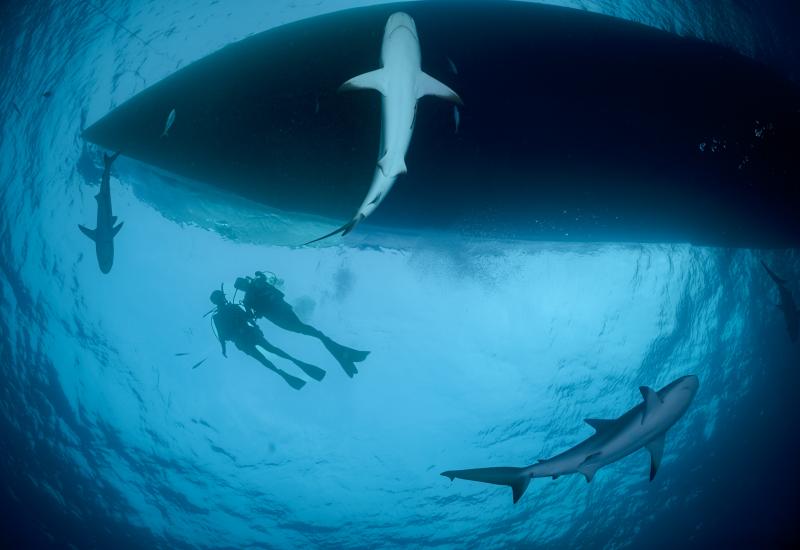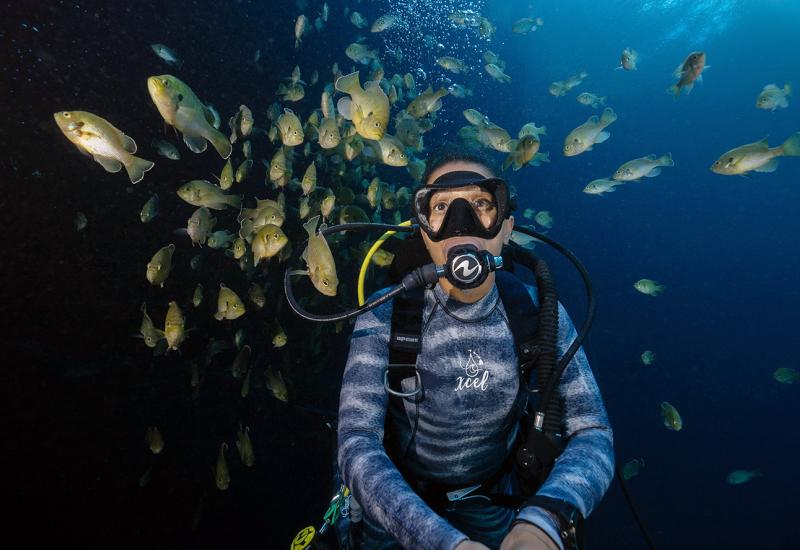ScubaLab: How We Test Dive Computers

ScubaLab: Computer Tests
Jon Whittle
Click Here to download the full test data PDF from the 2014 Dive Computer Review.
The ScubaLab 2014: Dive Computer Review will be featured online in early September.
------------------------------------------------
Ergo Test Protocol
The ScubaLab team of test divers evaluated each computer in seven ergonomic performance areas. Using underwater slates, divers rated performance on a scale of 1 to 5, with 1 being poor and 5 being excellent, and also provided written comments about their experience using each computer.
The ergo test categories were:
- Ease of reading primary dive screen
- Ease of understanding primary screen data
- Ease of accessing alternate screen(s)
- Ease of hearing audible warnings
- Backlight/screen illumination performance
- Ease of using safety stop feature
- Ease of accessing after-dive data
(Note — High and low diver scores for each test category were discarded, and final scores were rounded.)
------------------------------------------------
Objective Test Protocol
To gauge the performance of the computers’ algorithms, they were subjected together to a series of four dive simulations in the USC Catalina Hyperbaric Chamber.
Meant to simulate a day of diving, the dive profiles (shown in the four charts) were:
- 100 feet/60 minutes
- A one-hour surface interval
- 70 feet/45 minutes
- A two-hour surface interval
- 80 feet/45 minutes
- A one-hour surface interval
- 60 feet/40 minutes
The computers were placed in a tank of water inside the chamber, where a video camera was used to view and record each computer’s dive-screen data (listed in the spreadsheets).
Safety and conservative factors on the computers were set to their most liberal setting for the chamber dives. (In the case of Oceanic’s dual-logarithm OCi and ProPlus 3 computers, they were set to the PZ+ and DSAT logarithms respectively to gauge the differences between the algorithms.)
Note that while some computers display No Decompression Limit (NDL) data only in minutes (99 minutes) and others display hours and minutes (1:39), data is listed in the tables here in minutes only for clarity.
Special thanks to Catalina Chamber director Karl E. Huggins and chamber operators Paul Buechner, Scott Barnes and Kim Whiteside.
------------------------------------------------
Looking for more **ScubaLab testing? Check out more of our gear reviews:**
SCUBALAB 2014: Dive Bag Review
SCUBALAB 2014: Regulator Review
SCUBALAB 2014: BC Review
SCUBALAB 2014: Dive Lights Review
SCUBALAB 2014: Wetsuit Review
SCUBALAB 2013: Fins Review
SCUBALAB 2013: Mask Review
SCUBALAB 2013: Regulator Review

Jon Whittle
Click Here to download the full test data PDF from the 2014 Dive Computer Review.
The ScubaLab 2014: Dive Computer Review will be featured online in early September.
------------------------------------------------
Ergo Test Protocol
The ScubaLab team of test divers evaluated each computer in seven ergonomic performance areas. Using underwater slates, divers rated performance on a scale of 1 to 5, with 1 being poor and 5 being excellent, and also provided written comments about their experience using each computer.
The ergo test categories were:
- Ease of reading primary dive screen
- Ease of understanding primary screen data
- Ease of accessing alternate screen(s)
- Ease of hearing audible warnings
- Backlight/screen illumination performance
- Ease of using safety stop feature
- Ease of accessing after-dive data
(Note — High and low diver scores for each test category were discarded, and final scores were rounded.)
------------------------------------------------
Objective Test Protocol
To gauge the performance of the computers’ algorithms, they were subjected together to a series of four dive simulations in the USC Catalina Hyperbaric Chamber.
Meant to simulate a day of diving, the dive profiles (shown in the four charts) were:
- 100 feet/60 minutes
- A one-hour surface interval
- 70 feet/45 minutes
- A two-hour surface interval
- 80 feet/45 minutes
- A one-hour surface interval
- 60 feet/40 minutes
The computers were placed in a tank of water inside the chamber, where a video camera was used to view and record each computer’s dive-screen data (listed in the spreadsheets).
Safety and conservative factors on the computers were set to their most liberal setting for the chamber dives. (In the case of Oceanic’s dual-logarithm OCi and ProPlus 3 computers, they were set to the PZ+ and DSAT logarithms respectively to gauge the differences between the algorithms.)
Note that while some computers display No Decompression Limit (NDL) data only in minutes (99 minutes) and others display hours and minutes (1:39), data is listed in the tables here in minutes only for clarity.
Special thanks to Catalina Chamber director Karl E. Huggins and chamber operators Paul Buechner, Scott Barnes and Kim Whiteside.
------------------------------------------------
Looking for more **ScubaLab testing? Check out more of our gear reviews:**
SCUBALAB 2014: Dive Bag Review
SCUBALAB 2014: Regulator Review
SCUBALAB 2014: BC Review
SCUBALAB 2014: Dive Lights Review
SCUBALAB 2014: Wetsuit Review
SCUBALAB 2013: Fins Review
SCUBALAB 2013: Mask Review
SCUBALAB 2013: Regulator Review










